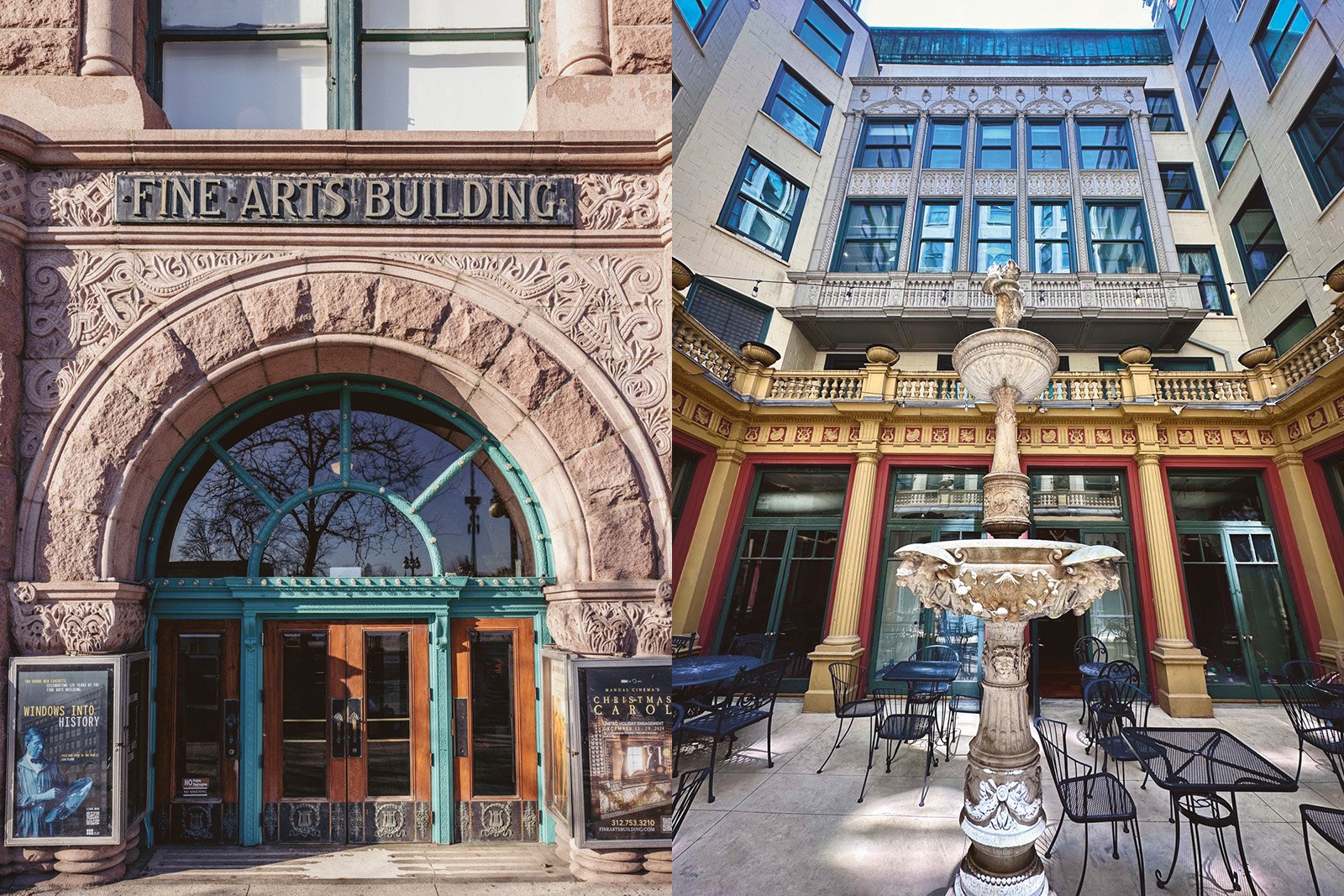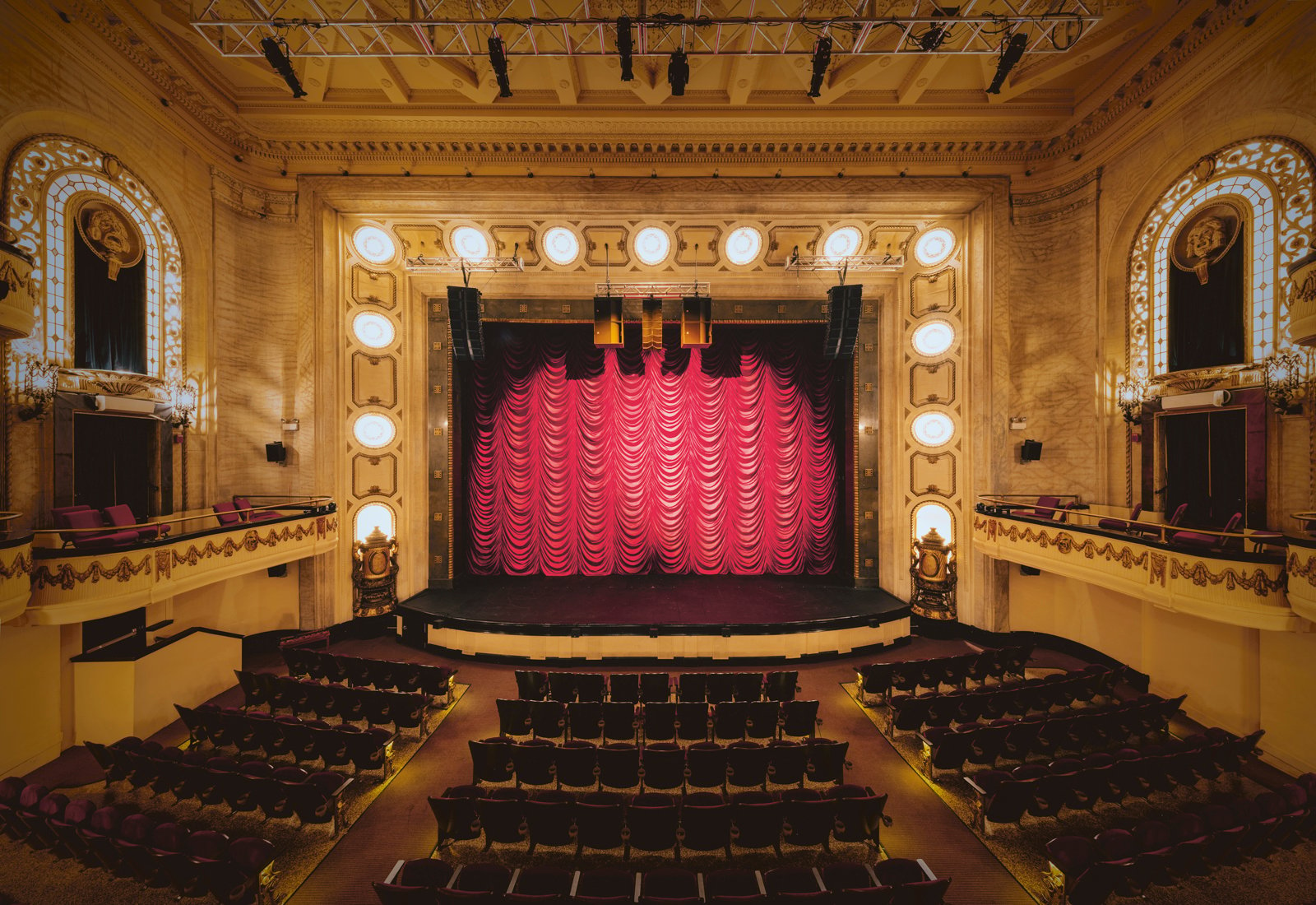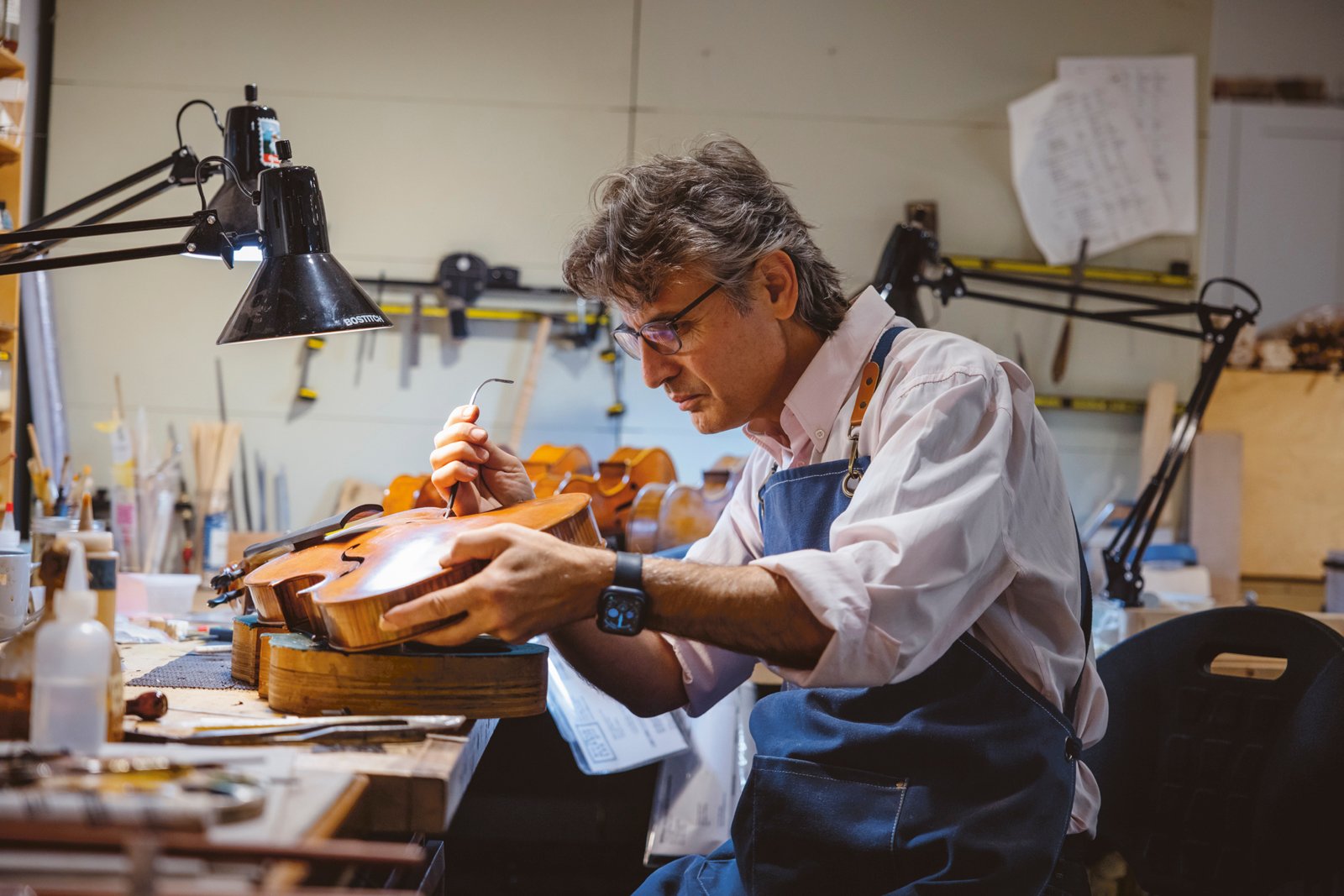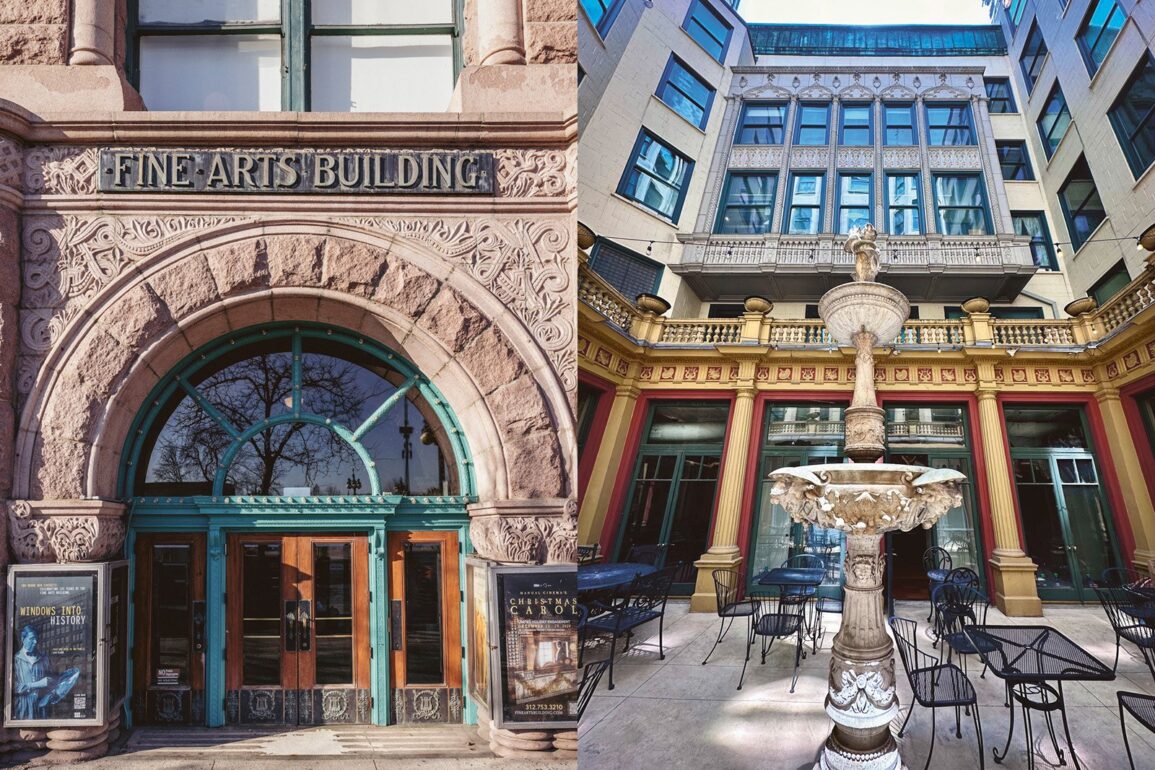“What is this place?”
Chicago author Keir Graff asks the question more than once as he’s describing the Fine Arts Building, the subject of his new book.
The question is an apt one. The ten-story building is part of the stone, glass, and steel cliffs that line Michigan Avenue and overlook Grant Park. From the outside, the building is “kind of blocky,” Graff describes. “It’s not a stunning building like the Rookery Building.”
Designed by Solon Beman, the Chicago architect who planned Pullman, the building is only truly exceptional for what’s inside. Enter through the doors, and you’ll discover artists’ studios, music schools, instrument makers, a bookstore, puppeteers, architects, dance troupes, opera companies, and more.
And just like its tenants, the building’s interior is eclectic. Graff, who himself works out of an office in the building, describes the interior as “a bit of a mishmash… the doorways, the windows, the woodwork will be totally different from the floor below.”

These eccentricities remind us that the Fine Arts Building is constantly changing and growing to reflect the world and city outside its doors.
Chicago’s Fine Arts Building: Music, Magic, and Murder, written by Graff and published by Chicago-based Trope, regales the reader with stories of one of the city’s arts cornerstones. The historical book began as a series of 2023 articles, which, when put together, constituted the longest article NewCity had ever published: 25,000 words and ten parts long.
The building’s first incarnation had nothing to do with the arts. Standing midway between Ida B. Wells Drive and Van Buren Street on Michigan Avenue, the Fine Arts Building opened as the Studebaker Brothers’ carriage assembly plant and showroom in 1885. The company outgrew the space within a decade, and Chicago aristocrat Charles C. Curtiss pitched and oversaw the conversion into more or less the building we know today. The showrooms were quickly turned into stages and carriage stockrooms into artists’ studios. Three stories were added to the top, and a courtyard was carved out of the building.
The reopened Fine Arts Building was an immediate success: it took pride of place for distinguished Chicago artists of the late 19th and early 20th centuries, welcoming tenants like sculptor Lorado Taft and Pulitzer-winning cartoonist John T. McCutcheon.
But starting in the 1920s, the building began to flounder as the first generations of owners and administrators began dying. Ownership changed through the decades, slowly emptying and eroding. By the 1970s, the building was at risk of demolition before it was landmarked – ensuring its survival – and then snapped up in 1978, almost on a whim, by Tom Graham. The building’s fortunes changed under his ownership. In the early 2000s, it passed over to Bob Berger, then was taken over by Erika Berger, his daughter, following Bob’s death.
Graff delights in the quirkiness of the building. Among its most famous distinctions are the legendary elevators, the last manually operated lifts in the city of Chicago, which are set to be phased out in the coming year. The building’s winding history also includes a murder, Chicago’s own “Citizen Kane,” and nearly 150 years of other curios, which Graff renders in detail.

Music has long been the foundation of the building. Venture around the corridors, and you’ll likely witness someone’s first foray into music, even while some of the world’s most respected instrument makers and arts companies practice their craft nearby. “Music instruction is probably the reason most people come to the Fine Arts Building,” says Graff. “My studio is next to a voice instructor. I hear singers of different abilities throughout the week. It always heartens me when I hear somebody who’s not very good, because good for them! I find that all part of the magic!”
The book may seem like a departure for Graff, who primarily writes fiction. But he explains that he’s always been inspired by his surroundings. One of his children’s books, for example, is set in a North Side Chicago apartment building that he lived in for over a decade.
Graff is a more recent tenant of the building. He’d visited the Fine Arts Building before, but it wasn’t until his friends, booksellers Javier and Kristin Ramirez, took over the second story bookshop to establish Exile in Bookville, that the author spent much time there.
“Javier and Kristin started saying ‘You should get a studio in the building.’ I soon saw the necessity, so I could hang out in the Fine Arts Building, too,” Graff says.
“I think it was helpful that I wrote the book very new in my tenancy. I approach[ed] it with a real sense of humility.” He interviewed occupants, combed through historical articles, and accessed building records to tell this story. It’s almost as if he is learning about the building at the same time we are.
The building’s fate has always been linked to the world around it, whether the Great Depression or the COVID-19 pandemic. Just like the city it represents, its makeup is always changing. “One of the things that continues to astonish me about this place is that nobody really knows who all is working here. The building management has an estimate of how many studios there are, but then of course people sublet, they lend their studios to friends, people come and go,” Graff says.

Graff profiles a few longstanding tenants, including respected stringed instrument maker and dealer William Harris Lee & Company, the Performers Music store, and the Chicago Youth Symphony Orchestras, the building’s longest active lessee. He also highlights newer arrivals, including the 2020-founded barber shop Red Birds Everywhere, visual artist Cecilia Beaven, and the Chicago International Puppet Theater Festival.
Graff thinks this combination of old and new augurs a bright future for the building. Citing the engaged ownership of Erika Berger, Graff says, “I think the trajectory of the building is only upwards.”
He points to the renovated Studebaker Theater, which now hosts scores of events, including the beloved radio show Wait Wait… Don’t Tell Me. Not only do these events help generate income for the building, they bring visitors into the fold. The building also leans into Open House Chicago and architecture tours, and invites visitors to meander around the hallowed maze of studios for free each month on second Fridays.
In this way, the book itself helps with the mission of the building: to bring in new folks. Graff says, “I know that so many people in Chicago and in this building feel a sense of ownership, and understandably – it’s a treasure!”
This post was originally published on this site be sure to check out more of their content








